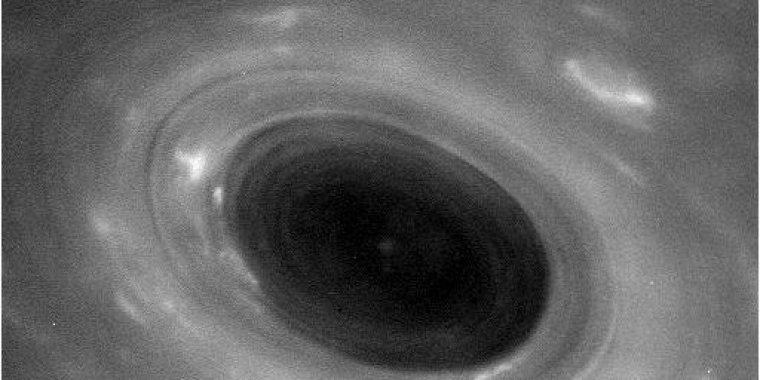| News / Space News |
Cassini Spacecraft Dives Between Saturn and Its Rings
NASA's Cassini spacecraft is back in contact with Earth after its successful first-ever dive through the narrow gap between the planet Saturn and its rings on April 26, 2017.

This unprocessed image shows features in Saturn's atmosphere from closer than ever before. The view was captured by NASA's Cassini spacecraft during its first Grand Finale dive past the planet on April 26, 2017. ![]()
The spacecraft is in the process of beaming back science and engineering data collected during its passage.
As it dove through the gap, Cassini came within about 1,900 miles (3,000 kilometers) of Saturn's cloud tops (where the air pressure is 1 bar -- comparable to the atmospheric pressure of Earth at sea level) and within about 200 miles (300 kilometers) of the innermost visible edge of the rings.
While mission managers were confident Cassini would pass through the gap successfully, they took extra precautions with this first dive, as the region had never been explored.
The gap between the rings and the top of Saturn's atmosphere is about 1,500 miles (2,000 kilometers) wide.
The best models for the region suggested that if there were ring particles in the area where Cassini crossed the ring plane, they would be tiny, on the scale of smoke particles.
The spacecraft zipped through this region at speeds of about 77,000 mph (124,000 kph) relative to the planet, so small particles hitting a sensitive area could potentially have disabled the spacecraft.
As a protective measure, the spacecraft used its large, dish-shaped high-gain antenna (13 feet or 4 meters across) as a shield, orienting it in the direction of oncoming ring particles. This meant that the spacecraft was out of contact with Earth during the ring-plane crossing, which took place at 2 a.m. PDT (5 a.m. EDT) on April 26.
Cassini was programmed to collect science data while close to the planet and turn toward Earth to make contact about 20 hours after the crossing.
Cassini's next dive through the gap is scheduled for May 2. (NASA)
YOU MAY ALSO LIKE



